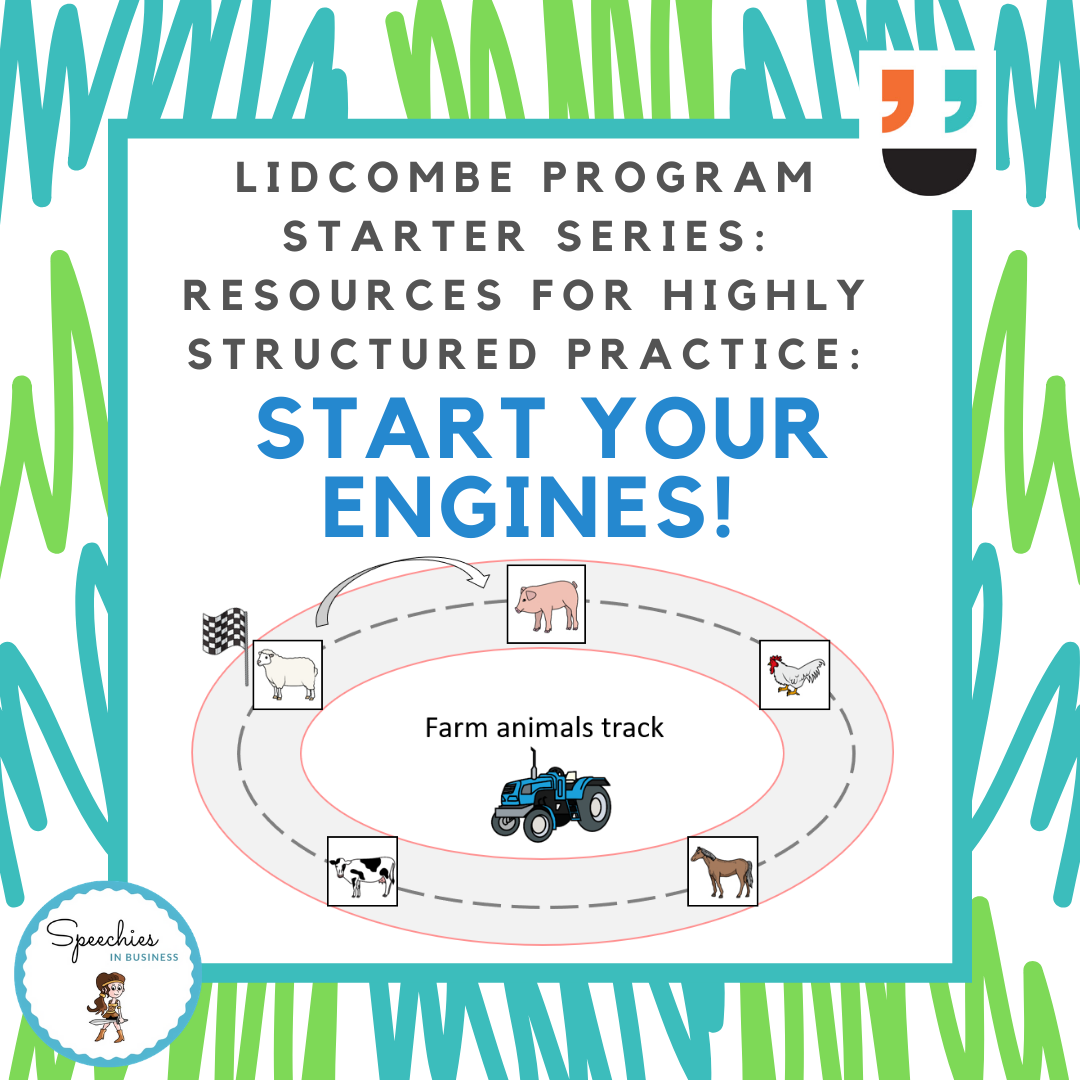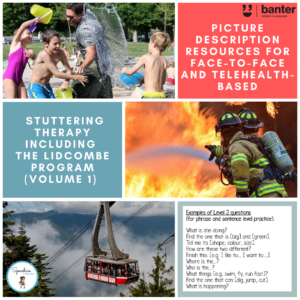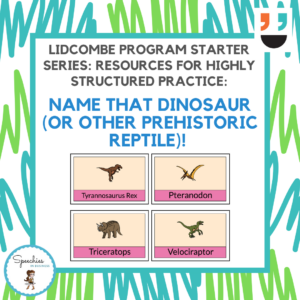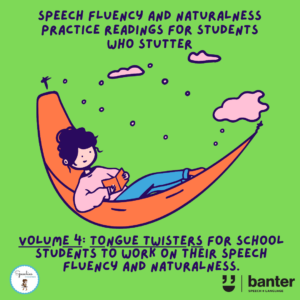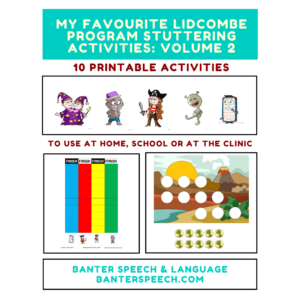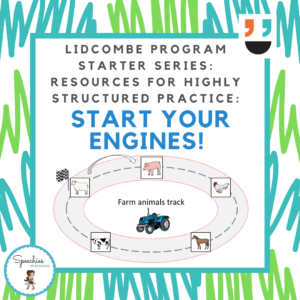(S108) Lidcombe Program Starter Series: Resources for Highly Structured Practice: Start Your Engines!
$5.99 including GST
With the Lidcombe Program for childhood stuttering, our first goal, usually, is to eliminate or virtually eliminate the child’s stuttering in ‘structured activities’ at home (early Stage 1). By ‘structured activities’, we mean that we set up the sessions deliberately in a way to get the child as fluent as possible, as quickly as possible, for 10-15 minutes a day.
In this 23-page resource, we include 20 race tracks, each featuring a vehicle to ‘go around’ a race track including five pit stops, each with high frequency words in an early developing category.
It is suitable for a range of expressive language tasks including single word naming, attribute naming (e.g. ‘What colour is this?’, ‘Where would I find this?’) and semantic feature analysis (e.g. ‘What would you do with this?’, ‘What can this one do?’).
Description
With the Lidcombe Program for childhood stuttering, our first goal, usually, is to eliminate or virtually eliminate the child’s stuttering in ‘structured activities’ at home (early Stage 1). By ‘structured activities’, we mean that we set up the sessions deliberately in a way to get the child as fluent as possible, as quickly as possible, for 10-15 minutes a day. You can read more about the Lidcombe Program here.
To encourage stutter-free speech, it’s a good idea to set up a calm environment. Usually, this means turning off the TV, distracting any siblings (and pets) with other activities, sitting on the floor or at a table with your child, and playing simple, age-appropriate games that encourage your child to speak at a level that assists them to stay fluent.
In our free ebook, we list 10 of our all-time favourite Lidcombe Program activities, including reading a picture book together, labelling games, lotto, glue and fishing games, memory, and binary choice activities. These days, many children respond well to digital or computer-based resources, including children doing the therapy by telehealth and when busy families want to do the therapy ‘on the move’ (or between other things).
In this 23-page resource, we include 20 race tracks, each featuring a vehicle to ‘go around’ a race track including five pit stops, each with high frequency words in an early developing category. It is suitable for a range of expressive language tasks, including:
- single word naming;
- attribute naming (e.g. ‘What colour is this?’, ‘Where would I find this?’); and
- semantic feature analysis (e.g. ‘What would you do with this?’, ‘What can this one do?’).
As the child’s fluency increases, this resource can be combined with our free carrier phrase pack to work on speech fluency and the phrase and sentence-levels. To go around the race track, you can cut out and use the vehicles included; or use one of your own (e.g. a matchbox car).
The resource is designed for all devices and is suitable for highly structured practice. The questions used in this resource are aligned with Blank’s First Level of Questioning and are thus suitable for most preschoolers and young school age children. You can read more about Blank’s Levels of Questioning here.
Remember: You need to be trained by a qualified speech pathologist to do the Lidcombe Program properly. Among other things, you need to be able to distinguish between stuttering and stutter-free speech; and confident to give the therapy (including the required verbal contingencies) as set out in the Lidcombe Program Manual.
Over the years, we’ve found that the Lidcombe Program works best when parents and children enjoy doing home practice sessions together. This resource is designed to help – particularly in the early, highly structured part of the program, or whenever necessary to help children who stutter to get and stay fluent.
In our speech pathology clinic, we have found this resource useful. We hope you do too!

